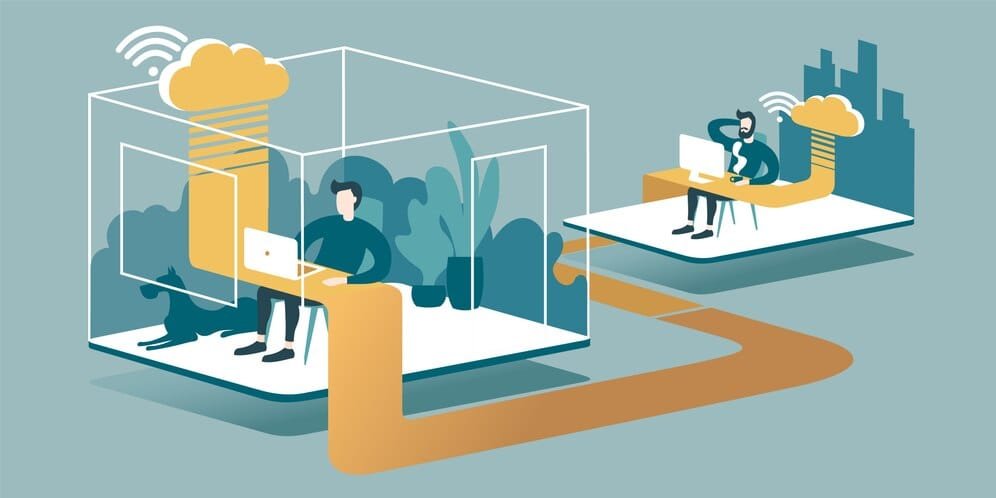How Security Threats Are Crippling Telcos
Overview:
Our hyper-connected society works on mobile networks – but is it up to the onslaught? So think of your phone as the new town square — a very active town square where billions of transactions and conversations happen every day. Now envision that square surrounded by siege. That’s the scenario Mobile Network Operators (MNOs) are up against today. This isn’t your grandpappy’s phone line; the stakes are astronomically higher.
Revolutionizing Mobile Security: Hacking for Fun and Profit: Forget Wild West — mobile security is a freakin battlefield What we witness today is a constant escalation in sophisticated attacks targeting network infrastructure and system user data alike. We’re talking DDoS attacks that take downside service, SIM swapping that swipes identities and progressively crafty malware capable of outsmarting even the stoutest firewalls. The old security models work are not cut out for this anymore.
Why This Is Important (Beyond the Headlines): A network outage isn’t just annoying; it’s a financial hit. For MNOs, downtime means lost revenue, damaged reputation, and possibly litigation risks. For companies that rely on mobile connectivity, the repercussions extend beyond any one individual, affecting productivity, customer trust and, in some instances, national security. User data breaches cause identity theft, financial loss for individuals, and decrease public trust in technology — beyond the bottom line.
What you will learn: In this article, we explore the biggest threats facing telcos, and how both security professionals and business leaders can act to minimize and mitigate these threats. So, we’ll be diving into the changing threat landscape, what some of the most common attack vectors have been, and how best to strengthen mobile networks against them. Thus, we will look at the regulatory landscape and some of the emerging technologies that will define mobile network defense in the coming years. Get ready for straight talk on how to barricade your networks from cyber criminals. Let’s get started!
Network Security Market Trends: A Scannable Analysis

Positive Trends:
- The Beginning of AI and Machine Learning (ML) AI/ML takes the lead in changing the way the threat is detected and responded. Rather than designing detection methods based on set signatures (which might not recognize new threats), AI can scrutinize patterns of activity through network segments to detect anomalies that point to an attack. This enables proactive threat hunting and helps speed up incident response. Ex: Darktrace independently detects and addresses potential threats in real-time with the help of AI, giving it an advantage over others.
- Faster, More Efficient: AI improves cloud security speed and efficiency, thanks to machine learning-based threat detection and real-time alerts. Cloud access security brokers (CASBs), cloud security posture management (CSPM), and cloud workload protection platforms (CWPPs) are among them. For instance, CrowdStrike and Zscaler are two companies that are successfully riding this trend with offerings that cover all aspects of cloud security.
- Growing Emphasis on Zero Trust Security: Zero trust architecture, every user and device is authenticated and authorized to access applications and data before being granted access, no matter where they are located. This is especially important in the era of remote work and hybrid cloud environments. For instance, Okta and Microsoft Azure Active Directory are key Zero Trust solution providers that are indicative of the market’s evolution towards this model.
- Expansion of Security Automation and Orchestration (SOAR): Automation of security processes enhances efficiency and minimizes response times to security incidents. SOAR platforms synchronize multiple security tools to facilitate more efficient workflows. [Palo Alto Networks] Cortex XSOAR: There is also a powerful SOAR platform that not only enables organizations to automate incident response but also improves the overall security posture of the organization.
Adverse Trends:
- The Changing Threat Landscape: As cyberattacks become more sophisticated, so too are the tools used to perpetrate them (including AI and automation). This is requiring ongoing adaptation and investment in advanced security technologies. For example, ransomware – that which uses advanced encryption and double extortion tactics, is a case in point for the continual and evolving nature of the threat landscape.
- Cybersecurity Skills Gap: Skill – the amount of available cybersecurity professionals better describes the index labor market. As this in turn leads to talent shortage, organizations find it difficult to manage their security operations properly. In addition: Understaffed security teams can also put organizations at risk, as finding and retaining qualified security analysts can be a challenge for many companies.
- Regulatory compliance complexity: Growing stringent regulations such as GDPR, CCPA, etc. increase security operations complexity and costs. Investment in specific technologies and processes is required, however, as businesses face added compliance mandates. For instance: Failure to comply with data privacy regulations can result in hefty fines and reputational damage for companies, making strong compliance programs a must-have.
- APIs as Attack Vectors: APIs become attractive targets for attackers, necessitating comprehensive SecDevOps approaches. This requires a transition to more secure software development practices and strong supply chain risk management. It can be seen in the example: The SolarWinds attack that highlighted the devastating effects of supply chain weaknesses.
Actionable Insights:
- Adopt AI/ML: Seek AI-centric solutions for advanced detection and prediction capabilities.
- Cloud Security Focus: With the vulnerabilities that cloud environments present to data and applications, focus on cloud security solutions.
- Use Zero Trust: Reduce an attack surface and improve security posture by adopting a Zero Trust security model.
- Collect Them All: Etch SOAR into a process.
- Training and development programs to close the cybersecurity skills gap
- Take pro-active compliance action: Follow the development of rules and build good compliance programs.
- Improve Supply Chain Security: Adopt strict security measures for the entire software development lifecycle and supply chain.
Feeding strategies and addressing these trends pro-actively helps organizations strengthen security posture, lessen risks and seize inviting opportunities in the evolving network security market.
- Healthcare: Hospitals deploy firewalls and intrusion detection systems to safeguard patient data (such as electronic health records) against unauthorized access. Multi-factor authentication, for example, is essential to prevent breaches and remain compliant with HIPAA standards. Ongoing security audits and penetration testing can uncover and address vulnerabilities before hackers have a chance to take advantage of them. Bottom line: Secure patient data and compliance involve strong security.
- Technology: Software companies use VPNs to secure remote access for employees working from home to sensitive code and intellectual property. They also deploy security information and event management (SIEM) systems to surveil network activity for anomalies, providing real-time alerts for potential attacks. Takeaway: Protect your intellectual property and maintain business continuity with secure remote access and real-time threat detection.
- Automotives: Network security is used by car manufacturers to secure the vehicle control systems from hacking. This means adopting secure over-the-air (OTA) updates to fix vulnerabilities and erase the possibility that car thieves could hijack cars remotely. TAKEAWAY: Protecting the security of connected vehicles is essential to prevent theft, accidents, and data breaches.
- Manufacturing: Interconnected devices form the basis of smart factories. Manufacturers can protect these systems from cyberattacks that could halt production or cause physical damage by implementing industrial control system (ICS) security. Regular software updates and network segmentation isolate critical systems. The devil is in the details: A strong ICS security posture is critical to maintaining operational continuity and avoiding potentially disastrous interruptions.
- Financial Services: In the realm of financial services, banks rely on strong encryption protocols to safeguard sensitive financial information during transactions. Using advanced threat intelligence feeds allow them to identify and minimize emerging threats proactively, and multi-layered security controls such as intrusion prevention systems. Bottom line: Stringent security measures are critical to maintaining customer trust and complying with onerous regulatory requirements.
- Mobile Network Operators (MNOs): MNOs employ advanced network security technologies, including deep packet inspection, to identify and thwart denial-of-service attacks that could cripple network infrastructure. They too utilize sophisticated analytics to identify and react to fraud and SIM swapping attacks. The important message: Prioritizing proactive threat detection and network traffic cleanup early on will lead to minimal infrastructure damage and loss.
- Threat detection and response powered by AI: A good number of organizations are investing heavily, and integrating AI & ML-based solutions to manage their security. This enables rapid and precise detection of advanced attacks, such as zero-day exploits and sophisticated cyberattacks (APTs), that traditional signature-based systems overlook. For instance, Darktrace has improved its AI engine to analyze network traffic patterns more effectively and predict potential breaches in real-time, enabling faster containment.
- Extended Detection and Response (XDR): More companies are starting to offer XDR solutions, which combine security data from multiple sources including networks, endpoints, cloud and even IoT devices. All information is now organized in a cohesive format providing a holistic view of the security stance allowing for quicker incident response and advanced threat hunting. CrowdStrike has incorporated more granular data about mobile networks into its XDR platform and is working to help Mobile Network Operators (MNOs) be more aware of their subscribers’ security.
- Enhance Mobile Security: With the engagement of mobile devices on the rise, such as smartphones and tablets, companies are looking toward specialized solutions that target mobile network security. These innovations include stronger authentication methods, enhanced mobile threat detection, and secure access service edge (SASE) solutions designed for mobile environments. For example, Palo Alto Networks has added new capabilities to its Prisma Access SASE platform to better shield mobile users connecting to enterprise networks via MNOs.
- Strategic Partnerships and Acquisitions – (Inorganic Growth) – A lot of network security companies are opting for acquisitions to drive product portfolios and capabilities expansion, specifically in cloud security, IoT security, and AI. So, for example, a smaller firm focused on 5G network security could be purchased by a larger entity to improve its overall offering. This expedites entry into new markets and faster tech integration.
- Integration with DevSecOps: Network security vendors are aggressively selling and integrating their solutions in the DevSecOps pipeline. It also ensures that security is incorporated directly into applications and infrastructure during the design phase, minimizing the potential for weaknesses and increasing overall security posture. Given the priority of software security, companies are also offering tools and services that help developers easily fulfill security checks as part of their workflows.
- Concentration on Automation and Orchestration: Automating security tasks via orchestration platforms considerably enhances efficiency while minimizing detection and response time to potential threats. This allows security teams to work towards more strategic initiatives. IBM Security and other companies are improving the SOAR — Security Orchestration, Automation and Response — that will accelerate incident response across multiple network environments, including MNO infrastructure.
- Zero Trust Security Models Like the moving fortresses of medieval times, the shift towards Zero Trust security models is gaining momentum. These models assume that no entity should be automatically trusted, verifying every user, device and application requesting access to network resources. This granular approach reduces the effect on breaches. As such, many vendors are revamping their solutions around the principles of zero trust so that they can easily integrate with existing infrastructure.

Outlook & Summary: The Landmine of Mobile Network Security
The mobile network is not merely connecting people; it is becoming the nervous system of modern society. And, like any nervous system, when its under attack, the effects are dire. In the end, we discussed the rising security threats petrifying telcos from slick SIM-swap scams to breaking 5G at scale. But not all future mobile network security is doom and gloom.
Looking Ahead (5-10 Years):
- Defense by AI: An increase in the use of AI and machine learning tools for the detection and neutralization of threats in a proactive manner. It’s like we give your network an immune system — but superpowers! That will be essential for example to fight increasingly sophisticated attacks that human analysts can no longer keep up with.
- Zero Trust Goes to the Cloud: The old “castle-and-moat” security model is a relic. Zero trust architecture, which requires every connection to be verified no matter where it is coming from, will become the standard for mobile networks. It translates into more granular control and less reliance on coarse-grained network permissions.
- The Transformation of Quantum-Resistant Cryptography Over the next decade, there would therefore be a transition to quantum-resistant cryptography, which will shield mobile networks from future advancements in quantum computing power.
- Collaboration is Key — The magnitude of mobile networks requires collaboration. More collaboration and information sharing between telcos, security vendors and the government around joint security initiatives. This joint intelligence will be of vital importance to rapidly detect and respond to new threats.
Key Takeaway: Mobile network security is a business imperative, not a luxury. Ignoring the threats we present in this article is inviting risks of potentially systemwide financial collapse, reputational damage and national security risks.” By leveraging advanced analytics, AI and machine learning, and integration with mobile security approaches that focus on the mobile user and the mobile device.
The Big Question: Are your network mobile security strategies genuinely future-proof, or are you just playing whack-a-mole with ever-changing risk?











